Kaby Lake Motherboards at $140: MSI Z270 SLI Plus vs. ASRock Z270 Killer SLI
by E. Fylladitakis on May 1, 2017 10:30 AM EST- Posted in
- Motherboards
- Intel
- MSI
- ASRock
- SLI
- Kaby Lake
- Z270
- Z270 SLI PLUS
- Z270 Killer SLI
CPU Performance, Short Form
For our motherboard reviews, we use our short form testing method. These tests usually focus on if a motherboard is using MultiCore Turbo (the feature used to have maximum turbo on at all times, giving a frequency advantage), or if there are slight gains to be had from tweaking the firmware. We leave the BIOS settings at default and memory at JEDEC (DDR4-2133 C15) for these tests, making it very easy to see which motherboards have MCT enabled by default.
These results are using an i7-7700K, so will naturally be above i7-6700K results - as we test more Z270 motherboards we will continue forward with i7-7700K numbers.
Video Conversion – Handbrake v0.9.9: link
Handbrake is a media conversion tool that was initially designed to help DVD ISOs and Video CDs into more common video formats. For HandBrake, we take two videos (a 2h20 640x266 DVD rip and a 10min double UHD 3840x4320 animation short) and convert them to x264 format in an MP4 container. Results are given in terms of the frames per second processed, and HandBrake uses as many threads as possible.
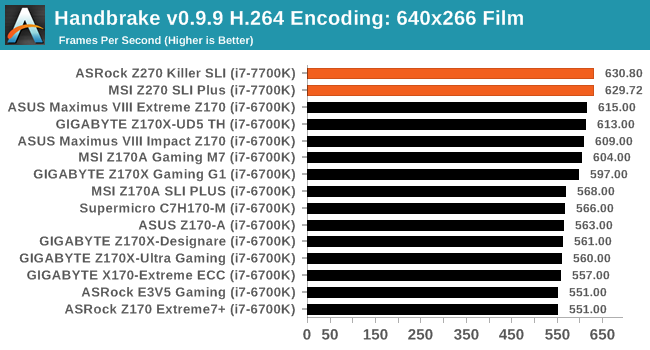
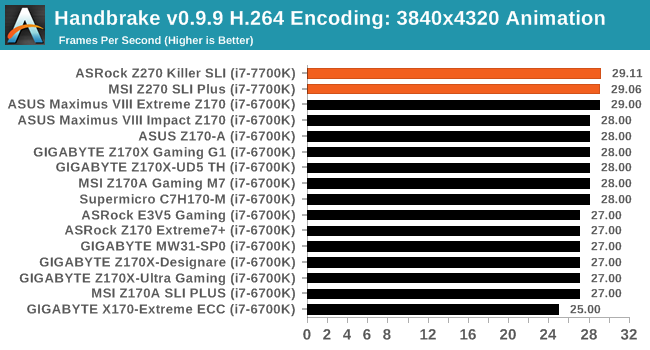
Compression – WinRAR 5.0.1: link
Our WinRAR test from 2013 is updated to the latest version of WinRAR at the start of 2014. We compress a set of 2867 files across 320 folders totaling 1.52 GB in size – 95% of these files are small typical website files, and the rest (90% of the size) are small 30 second 720p videos.
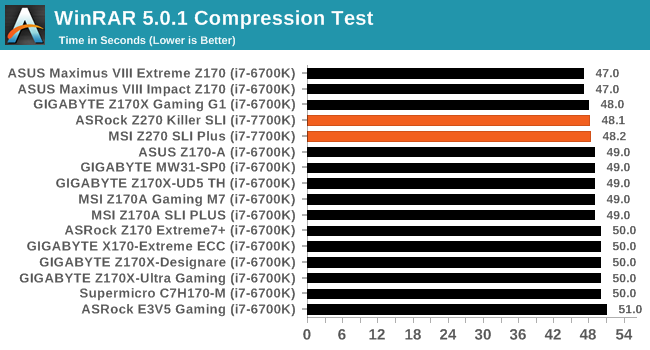
Point Calculations – 3D Movement Algorithm Test: link
3DPM is a self-penned benchmark, taking basic 3D movement algorithms used in Brownian Motion simulations and testing them for speed. High floating point performance, MHz and IPC wins in the single thread version, whereas the multithread version has to handle the threads and loves more cores. For a brief explanation of the platform agnostic coding behind this benchmark, see my forum post here.
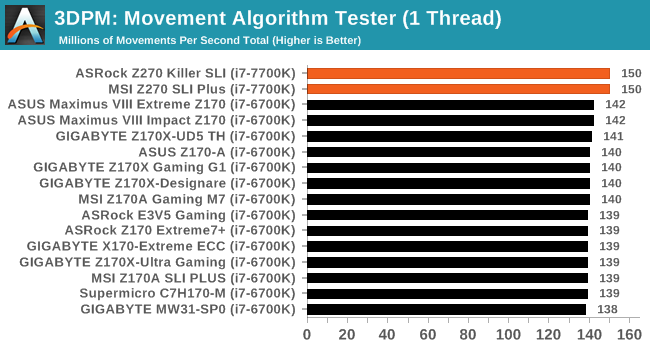
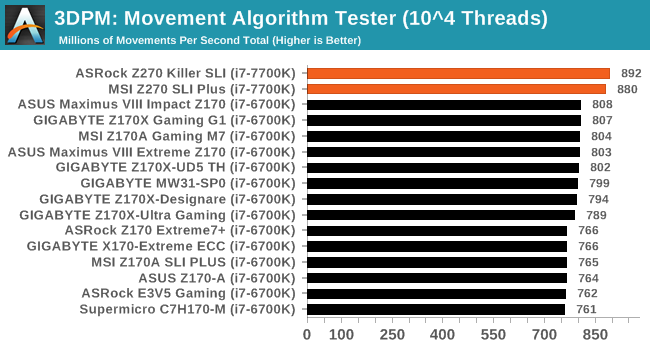
Rendering – POV-Ray 3.7: link
The Persistence of Vision Ray Tracer, or POV-Ray, is a freeware package for as the name suggests, ray tracing. It is a pure renderer, rather than modeling software, but the latest beta version contains a handy benchmark for stressing all processing threads on a platform. We have been using this test in motherboard reviews to test memory stability at various CPU speeds to good effect – if it passes the test, the IMC in the CPU is stable for a given CPU speed. As a CPU test, it runs for approximately 2-3 minutes on high end platforms.
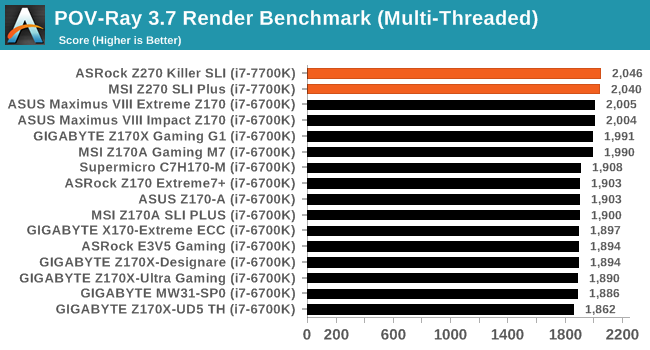
Synthetic – 7-Zip 9.2: link
As an open source compression tool, 7-Zip is a popular tool for making sets of files easier to handle and transfer. The software offers up its own benchmark, to which we report the result.
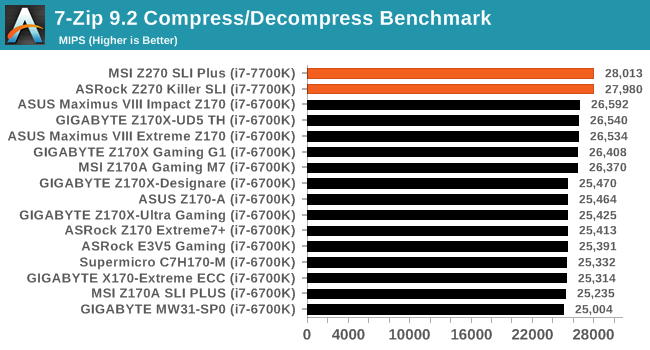










20 Comments
View All Comments
MarkieGcolor - Tuesday, May 2, 2017 - link
I like how the asrock has a pice slot above the gpu slot. Why don't more motherboards have more space between the cpu connected slots for sli/crossfire? I'll never buy another board that doesn't have 3 slot spacing for cpu's again!HollyDOL - Tuesday, May 2, 2017 - link
Usually that top PCIe 1x slot is where my audio card gets seated. It used to be recommended due to latency, no clue whether that reason still holds though, it became quite a custom for me.ImSpartacus - Tuesday, May 2, 2017 - link
Do you actually anticipate using sli or crossfire?I'm beginning to get the feeling that they are antiquated.
tsk2k - Wednesday, May 3, 2017 - link
The distance from the top PCIe x16 slot on the MSI to the CPU is the same as ASrock.GT710M - Tuesday, May 2, 2017 - link
so much detailsATC9001 - Tuesday, May 2, 2017 - link
Why no overclocking for a comparison?BurntMyBacon - Wednesday, May 3, 2017 - link
The article specifies the MSI board's VRM circuit as a 10 phase design and the ASRock as an 8(6+2) phase design. However, visual inspection (see photo of the CPU socket area with VRM heatsink removed) reveals both boards have the same number of chokes and MOSFETs under those VRM heatsinks. I presume I must be missing something. Please explain.blacksun123 - Wednesday, May 3, 2017 - link
From the test result, ASRock's power efficiency is much much better than MSI.blacksun123 - Wednesday, May 3, 2017 - link
Does MSI provide SLI bridge for this MB? Does it really support SLI? It costs USD$25~40 to buy a SLI HB bridge in the market.zafos888 - Saturday, September 9, 2017 - link
Amazing job on the reviewCan anyone tell me the height of the heatsinks around the CPU?
I want to use a Noctua D15 cooler and I dont know if the rams will fit underneath it, so I was thinking about rotatig it so the fan will be on top of the heatsinks instead of the rams. The space under the fan is 32mm. Thanks in advance